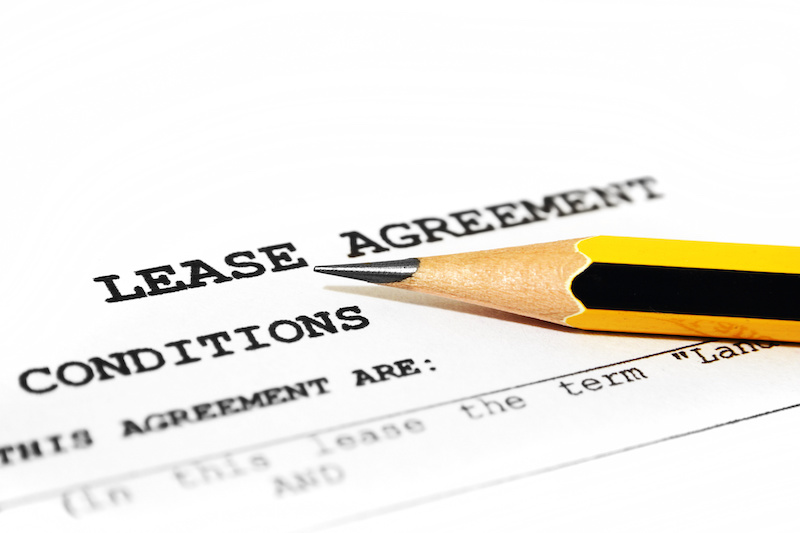
3 Components of Choosing an Exit Strategy for Your Real Estate Investment

You have found the perfect home for your next real estate investment. The pieces are falling into place: the motivated seller, a quality property, and numbers that look promising to make a profit. Now it’s time to consider what your exit strategy for your real estate investment will be.
But, what will you do with your investment after you buy it? That is where the money is made! I use three components, or what I call the decision triangle, to determine an exit strategy for my investments.
Decision Triangle: How to Choose Your Exit Strategy

Your Personal Finances
The first aspect of the decision triangle is to consider your own personal finances. Do you need to cash out of your real estate investment deal quickly, or can you wait for a larger profit in the future?
If you need cash right away, the best is probably to sell outright. Selling right away means you will get cash quickly. However, I only suggest selling outright if profit is over 10% of the home value. Also, selling outright has costs like commissions and closing costs.
Selling on terms, like subject-to the existing loan taught in the free Unlimited Funding course, means selling will cost less. You will have the chance for more profit in the future than selling outright.
The Market Conditions
The market conditions also play a part in deciding an exit strategy for a real estate investment.
For instance, if the market is going down quickly, it might make sense to sell outright. If the market crashes, the potential for profit in the future dwindles.
However, if the market is neutral or appreciating and you don’t need cash immediately, selling on terms, like a wrap or subject to the existing loan, gives the potential for more profit in the long run.
The Deal Structure
How you purchase the investment property is probably the most important part of the decision triangle. It has three considerations:
Purchase Price
The discount you negotiate when purchasing from a motivated seller can determine what exit strategy to use.
If you want to sell outright as an exit strategy, the purchase price should be at 75% or less of the Fair Market Value (FMV). The FMV is what the home is worth in the current market conditions and based on comparable sold homes.
Selling on terms you can still make a large profit with a smaller negotiated discount. For this type of exit strategy, I suggest a FMV or 80% or less. Although, a bigger discount means a happier bank account!
Type of Financing and Interest Rate on Existing Loan
When selling outright the type of financing and interest rate on the seller’s loan doesn’t matter. You will sell so quickly, their financing won’t affect your deal.
If you sell on terms where you will keep the current loan in place, this information is very important. The best-case scenario is to find a motivated seller with an existing mortgage with an interest rate of 7% or less. You should also avoid adjustable rate and balloon mortgages.
Source of Funds Used for Purchase
Like with the financing and interest rates, if your exit strategy is to sell the investment property outright, the source of funds isn’t important because you won’t own the home for long.
There is a right way and a wrong way to buy real estate. The most beneficial way to purchase an investment property on terms with zero money down. However, if you need cash try to source long-term, low-cost money from a private investor. I always teach that it is best not to use your own money, unless absolutely necessary.
Using these components can help you determine a profitable exit strategy for your next real estate investment, but there is so much more to learn!
Last Week’s News –
How to Handle Seller Objections When Closing an REI Deal

It’s important for Real Estate Investors to prepare and handle seller objections before a meeting with a motivated seller. It is the best way to beat the nervousness and to handle concerns flawlessly.
If you know what to expect, you will know what to say. That will build the seller’s confidence in your abilities to help them.
Common Seller Objections
Over the years I have probably heard every seller objection possible. The key is being confident in your response. If you are a new investor, this can be the hard part, because you might not know all the answers. That is why knowing some common objections and how to handle them can help you build a successful real estate investing business.
How to Handle Common Seller Objections
- The ‘other guy’ said he would give me this much money for my house.
You need to be prepared to explain the costs that might be hidden with another investor or agent. There are often commissions, fees, holding costs, expensive repairs, and other items that can add up to a large sum of money. Showing them the structure of your deal laid out on paper can show them exactly what they are getting when they sell their home to you.
- I want to sell my house in the traditional way.
Most sellers, even when they are motivated, don’t realize the costs and time it takes to sell their home traditionally. Cover the following items about selling their home with an agent versus selling it to you:
- Agent commissions
- Closing costs
- The time it takes to prepare, list, and sell a home
- Costs to repair the home to ‘traditional’ sale standards
When they need to be out of their home quickly, a traditional sale isn’t likely to work.
- Are you scamming me?
This is where your credibility comes in. Bringing a credibility folder that has testimonials and all the research you have done on their property any comparable homes will show the seller you are serious.
- This sounds too good to be true.
You can combine some answers above if you get this objection. Be prepared to go over the details of the deal you are offering and show them exactly how they benefit. This is also information you should bring with you to every appointment. When you are prepared, it will be easier to build rapport with a seller and show them you really are there to help them.
- I don’t have enough money to move.
Crunch the numbers for the deal, but often times you will still come out ahead if you offer a small amount of cash at closing to help them move. And sometimes this is all that it takes to close the deal!

Practice Makes Perfect
You won’t get it right every time. Don’t beat yourself up. With experience comes confidence, and over time you will handle objections easily.
Keep notes on your meetings, especially if new objections come up. Keep track of what works and what doesn’t and tweak your presentation to reflect your experiences.
Practicing with a friend, family member or colleague can also help boost your presentation skills and increase your comfort with handling tough questions.
—
How Does Lease Option To Buy Work?

If you’ve purchased a property and you’re looking to rent it out, you may want to consider doing a lease option. But how does a lease option to buy work? And is it right for you?
There are several simple steps to set up a lease option and start your journey to growing your investment portfolio.
What is a Lease Option?
A lease option is a way to keep ownership in an investment home without spending money out-of-pocket each month. The property is rented to a tenant, who has interest in purchasing the property, but can’t because of poor credit or no down payment.
By paying a fee for the first right to buy the tenant can purchase the property during their lease term if you sell. However, if they don’t end up buying the home you keep the fee, and all of the rent paid.

Steps to Set up a Lease Option
A lease option is something that credit challenged buyers would be interested in. They want to be homeowners, but can’t get approved through traditional methods.
There are several steps to take to set up a lease option.
1. Determine the rent and payment options
Before you look for a tenant you need to decide what rent you will charge and the amount of the first right to purchase fee that will be paid at closing.
Because a lease option is for tenants who don’t have an option to buy a house through a traditional method, you can set the rent above the fair market rent, sometimes by as much as 20%.
You can also set a rent credit that will be deducted from the sales price if they do decide to purchase within the set timeframe. For example, if the tenant pays $1,000 per month they won’t get a rent credit. If they choose to pay an increased rent of $1,200 per month you can offer a $300 rent credit.
If the tenant does not purchase the home, you keep the right to purchase fee and all the rent paid.
2. Prepare and market the house
After you decide on a rent amount you can prepare to market the house.
Staging
You don’t need to spend a lot of money or do extensive work on the home. Preparing the home can be as simple as a fresh coat of paint and some welcoming touches like bathroom towels and a bowl of fruit in the kitchen.
Signage
When the house is ready, you will put a sign in the front yard and a visible flyer in the window. You can also put up bandit signs in the neighborhood for drive by interest. The marketing should be clear that someone can start the process of owning a home with bad credit.
Advertising
You do not need to spend a lot on advertising. You can market the rental for free online with craigslist and other online marketplaces. It is also very effective to have a phone number to advertise where there is a pre-recorded message explaining the process of the lease option.
If you have extra funds, you can start a direct mail campaign.
3. Find a Buyer
When you have interest you can pre-qualify the tenant with a set list of questions about their maximum monthly payment and how soon they need to move. If they see the house and are interested, screen the buyer to make sure they meet your qualifications. This includes:
- Credit report
- Recent bank statements
- Pay stubs
- How much they have for an earnest deposit
If the buyer qualifies, you can move on to closing.
4. Closing
It is important to set up the closing as soon as possible. There are a few things to keep in mind:
- Do a final walk through before closing to note any damages
- Have an attorney at the closing
- Set up automatic payments to collect the monthly rent
Thank you for visiting my Weekly News site. To make sure you stay up to date, please confirm or change your email. Thank you — Marko
